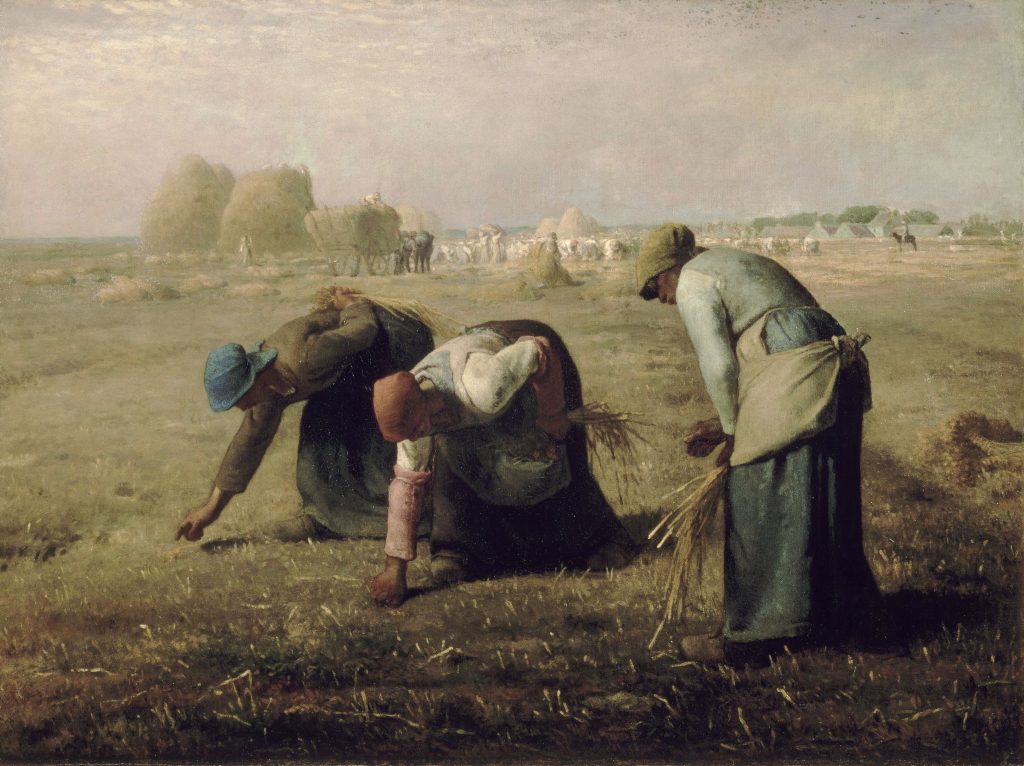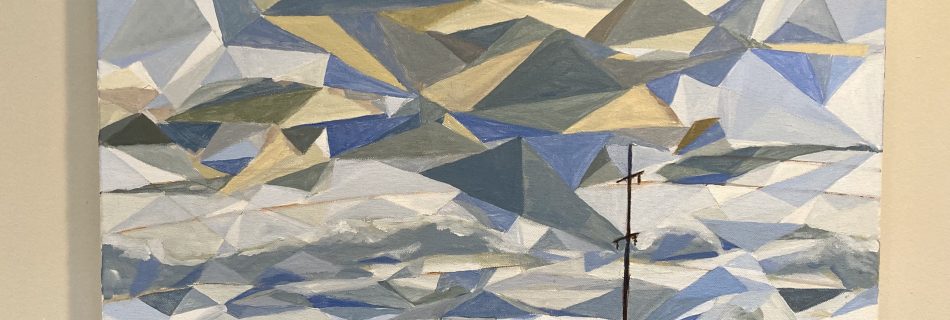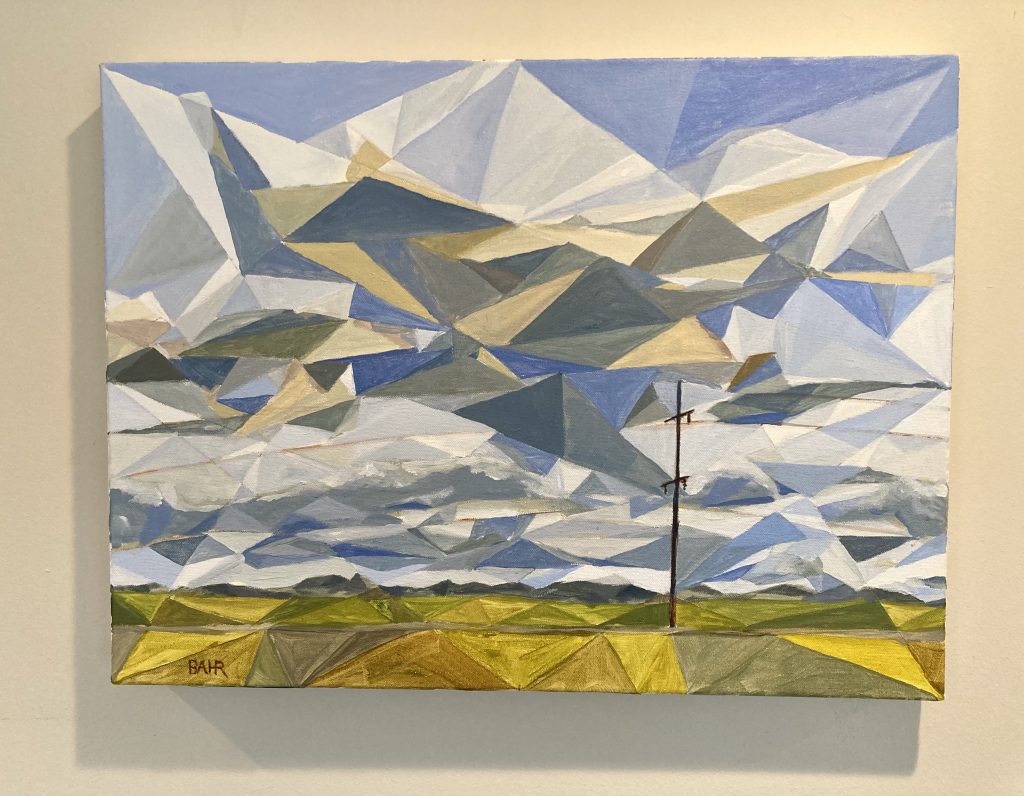I’m not sure why Jean-François Millet’s 1857 painting “The Gleaners” first grabbed my attention. It could be the mysterious activity in the background, with haystacks, wagons, and workers almost washed away by atmospheric perspective. It could be the subject matter–Millet was clearly trying to uplift the life and labor of the poor. The February Revolution was not far in the past when Millet painted “The Gleaners.” (After a field has been harvested, the poorest of the community were allowed to pick through or glean what was left.) It could be the substantial presence that those three women brought to the scene. The significance of this painting–which was criticized in its day for depicting laborers in such large (33″ x 44″) format–looms large in art history, with Van Gogh and Pissaro quoting in it their own compositions, and the work of other contemporary artists clearly showing its influence on their subject matter and approach.
I just like it.
When I was reminded of my love for Millet as I pondered a scene in a popular movie that was clearly influenced by his painting “The Angelus,” the idea of making a copy of “The Gleaners” popped into my head. What could I learn from it?
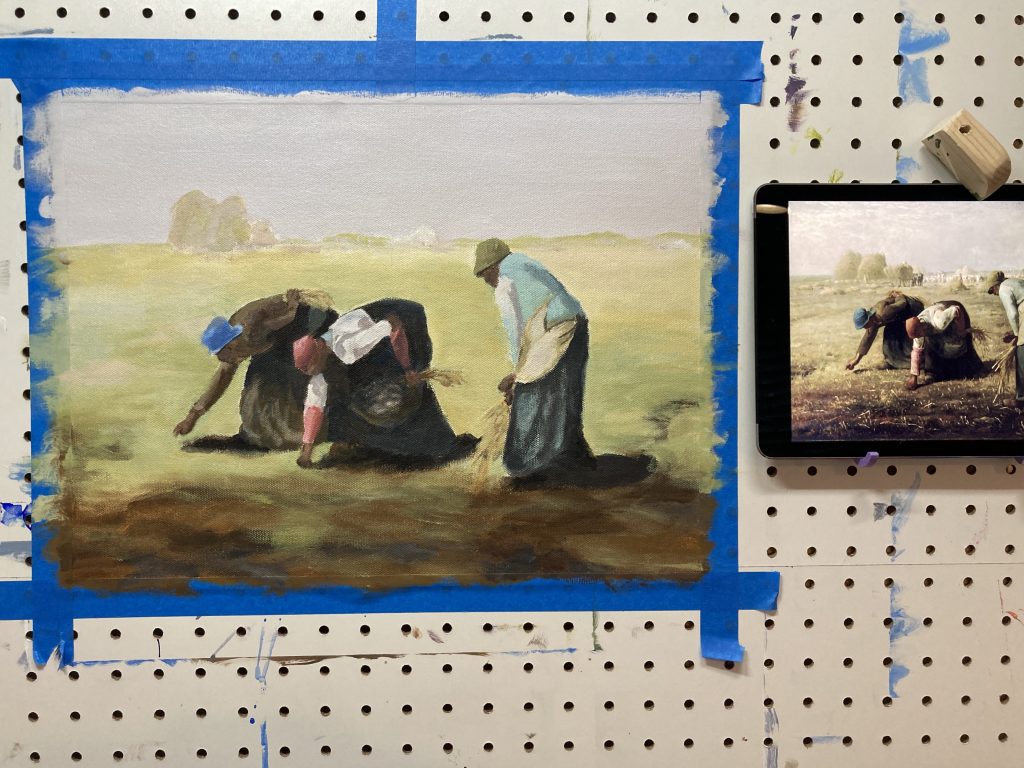
I was certainly reminded that I have a lot to learn about subtle color, compressed value ranges, and presenting the figure. My love for this painting deepened.
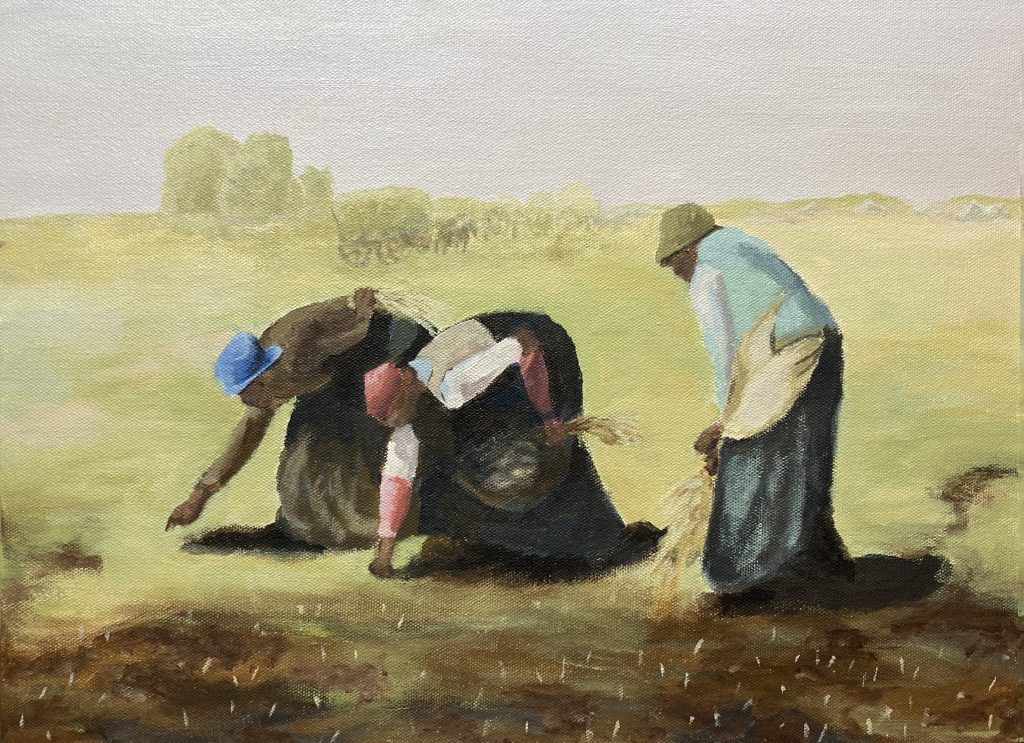
This won’t be the last Millet I copy. In the past, I have copied his drawings. His draftsmanship is what I aspire to–not tight rendering, but convincing and authentic in a different way. I have an idea for painting his “Angelus,” but that needs to wait.
I don’t feel comfortable selling a copy of another painter’s work, even if most everyone would understand that this is my inferior copy. But I’m glad I painted this. Hard work and rewarding. I often hear that we artists should always be students of the artform. It never occurs to me that I will be anything but a student. Hopefully a student that is always improving–and using new knowledge to say my truth a little better. •
